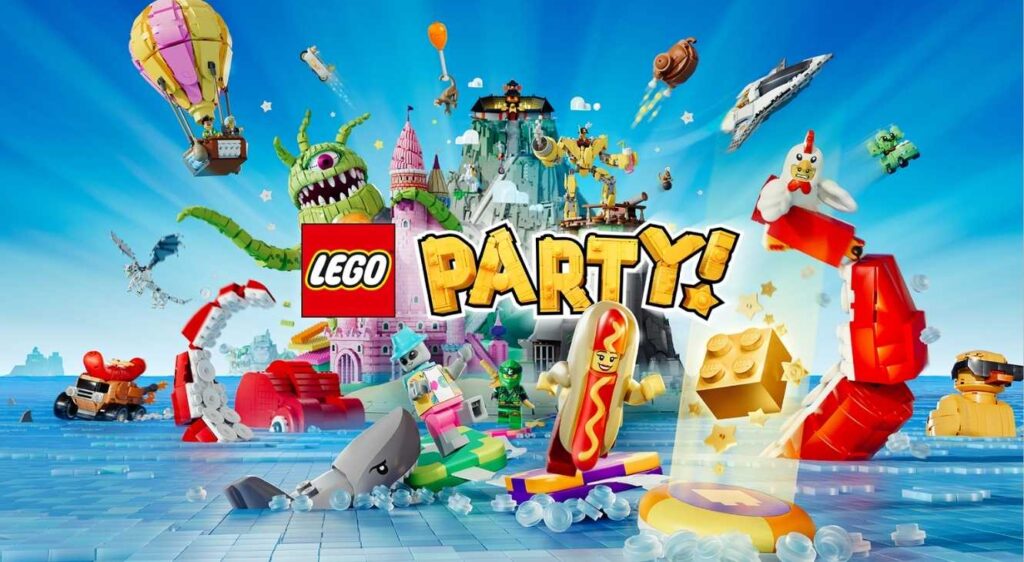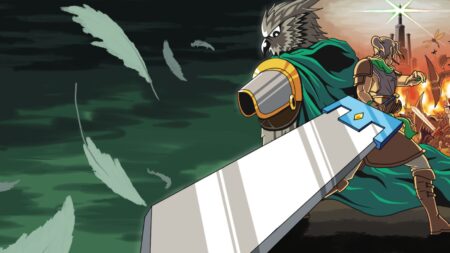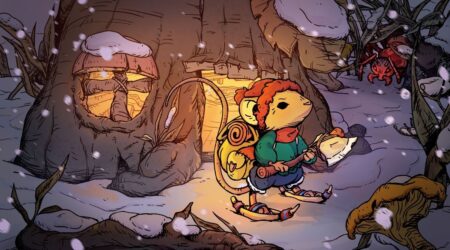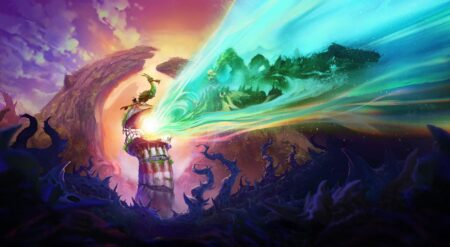Lego Party is the first party game to come from the Lego brand, but, shockingly, it’s taken this long. Since 1932, the Lego brand has grown brick by brick, forming the massive and widely recognizable company it is today. With the rise of video games in the ’90s, Lego also ventured into the interactive entertainment industry, producing dozens of games in a variety of genres.
Their latest foray into gaming has resulted in Lego Party, a multiplayer party game developed by SMG Studio and published by Fictions. Striking out in a new genre always carries some risk, but the toy’s inherent versatility, along with the strength of its existing themes, creates a charming experience that feels fun and fair.
Players can jump in as one of dozens of Lego Minifigures, including a woman dressed as a Lego brick, a slice of pizza, or various other minifigures from Lego’s history. The main attraction in Lego Party is Challenge Zone, where players can select one of four boards they’ll be traversing between minigames. The boards largely follow one of Lego’s popular themes, like Ninjago Zone, Pirate Zone, or Space Zone. The fourth board lets players loose in a theme park, where each of the three ‘lands’ can be created by the first player to reach them.
The ultimate goal is to remain in first place when the final round ends, with players determining how many rounds the game will last before starting. Players will collect studs from the board or by performing well in minigames, and those in turn can be used to purchase Gold Bricks, which can solidify a player’s position in the ranks. Whoever has the most Gold Bricks at the end of the game, with studs used as a tiebreaker, is declared the winner.
Each game begins with a minigame, giving each player some starting funds as well as determining the player order for the round. In fact, turn order can change between each round based on your performance, helping each round to feel less frustrating since one bad performance doesn’t doom a player to being the last to move each round. Additionally, Lego Party’s minigames generally feel fairer.
Minigames set the mood in Lego Party before launching players into the main event.
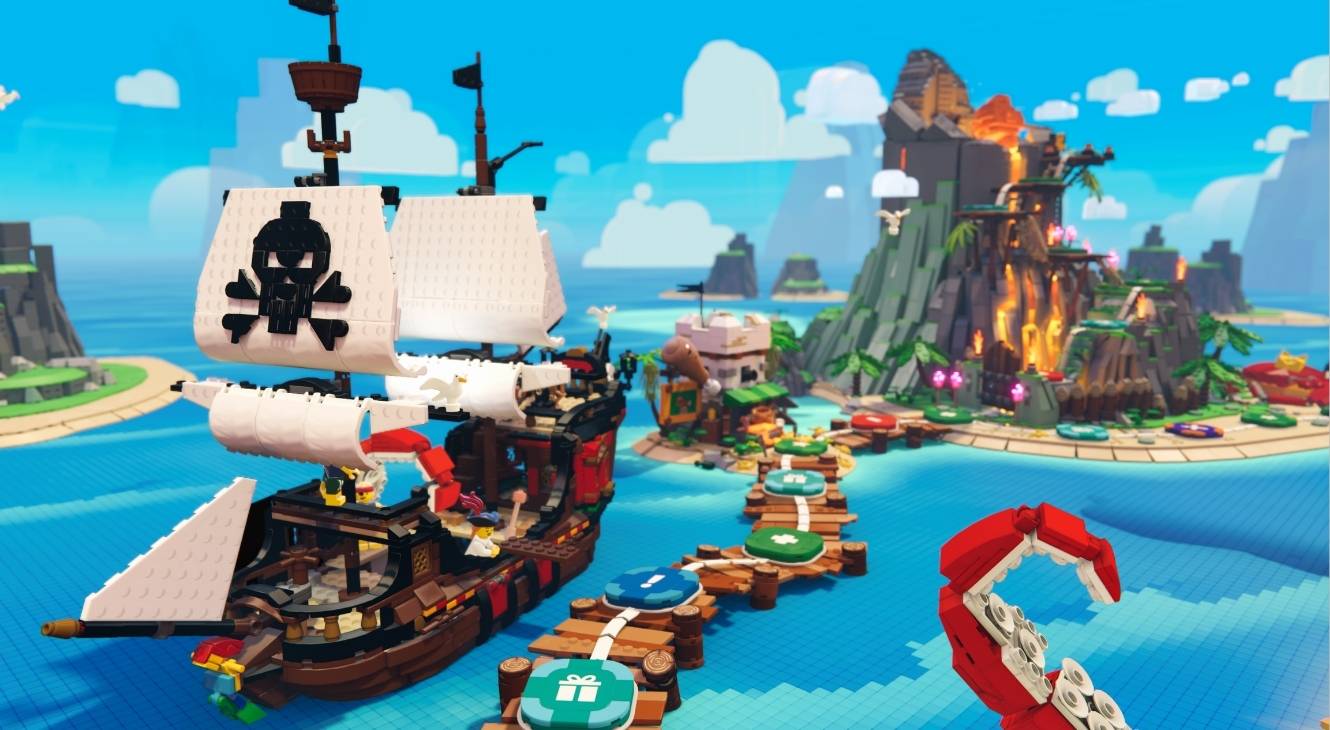
There is still an element of luck to be found, like in other party games, but typically the minigames depend on dexterity and skill. Some minigames are also played as three shorter rounds, with your performance adding up to determine your final score. This makes it easier to determine whether one friend truly earned their first-place win or if they simply got lucky.
The minigames themselves are rightfully where most of the fun in Lego Party can be found. Each round begins with a minigame from the catalogue of dozens, drawing from themes like space, pirates, Ninjago and more. Appropriately, each minigame is made up of anywhere from a handful to hundreds of Lego bricks, making each one feel like a true celebration of the toy.
Some especially clever minigames draw upon the building of Lego sets themselves to provide a challenge, like swirling all the pieces of a smaller set in a mini-tornado, then challenging players to determine which set can be made from the pieces. Another minigame saw the players transformed into fish, flopping around to collect Lego studs while bouncing off walls and each other to reverse direction. These games all felt fun and distinct, even when playing a few different takes on a race to the finish.
Each board represents a different theme, and they feel appropriately distinct, rather than feeling like a cosmetic paint job. The pirate board sees players jumping across floating planks of wood and using a kraken as a shortcut, while the space board has players using teleporters to visit various platforms.
The theme park board creates more opportunities to buy Gold Bricks, but you can also earn a free Gold Brick by venturing into the various lands and succeeding in their challenges. Certainly, after a few games, you’ll have a favorite board, though you’ll have to convince your friends to play on yours over theirs.
The minigames prove equally entertaining, if not more so, than the Boards themselves.
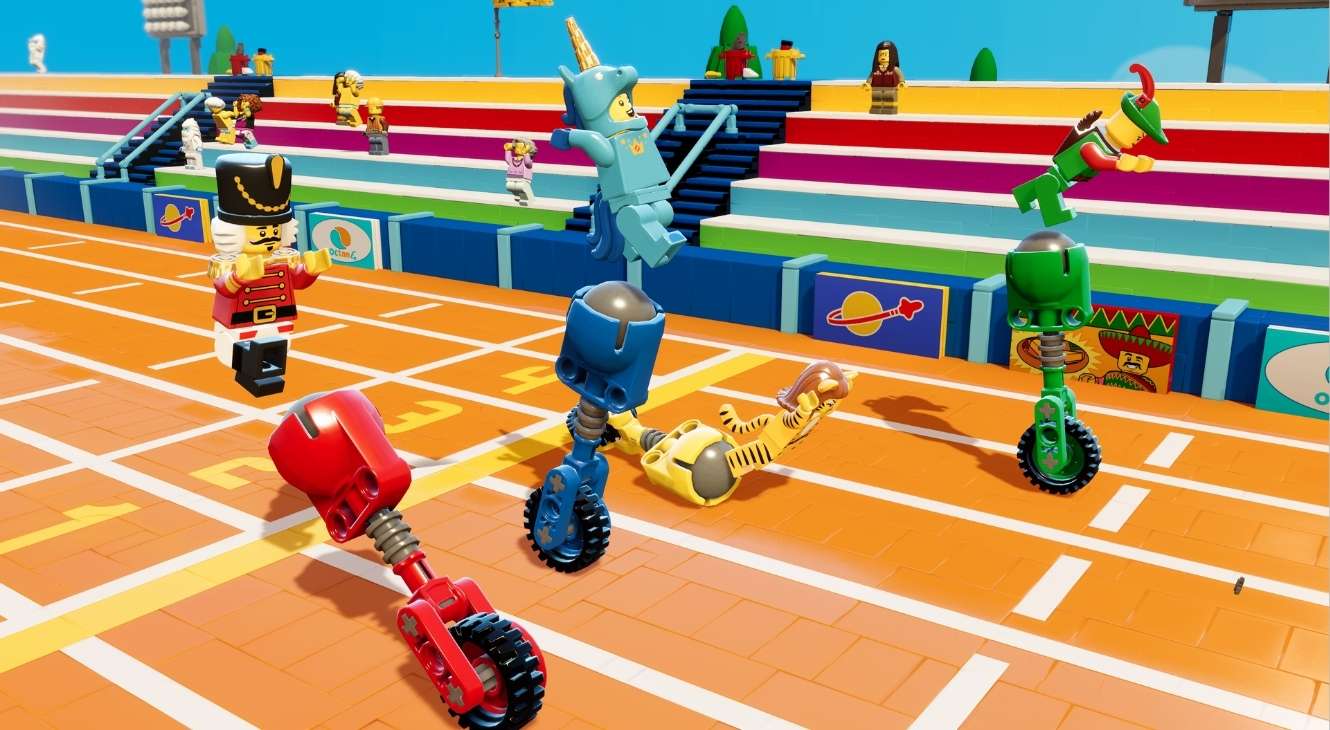
Once a game has ended and a winner is crowned, you’ll receive experience, increasing both your personal rank and the rank for the board you played on. In both cases, you’ll receive minifigures and carrots as a reward, though the board rewards will be themed to the board itself. For instance, leveling up your pirate board rank will net you pirate and captain minifigures.
Carrots can be spent in a shop to unlock other minifigures, and every minifigure you unlock, whether it’s through simply ranking up or spending carrots, gives you more options for creating your own unique minifigure. Whenever you unlock a minifigure, all of its various parts are added to a pool, which you can use to mix and match when making your own, allowing you to play as a Lego Brick wearing a hard hat.
The rank-up rewards and minifigures to unlock create a fun carrot on a stick to chase for those Lego diehards that want to craft their perfect minifigure, but even casual players can appreciate the steady stream of unlocked playable ‘characters’.
Of course, Challenge Zone isn’t the only way to enjoy Lego Party’s many minigames. Minigame Rush allows players to run through a gauntlet of minigames grouped by theme, letting them enjoy a variety of games without the lengthy board game rounds in between. Players earn studs based on their performance in each minigame, with certain rounds featuring multipliers that allow players to mount a comeback.
Unlockable playable characters add extra fun for both hardcore and casual fans.
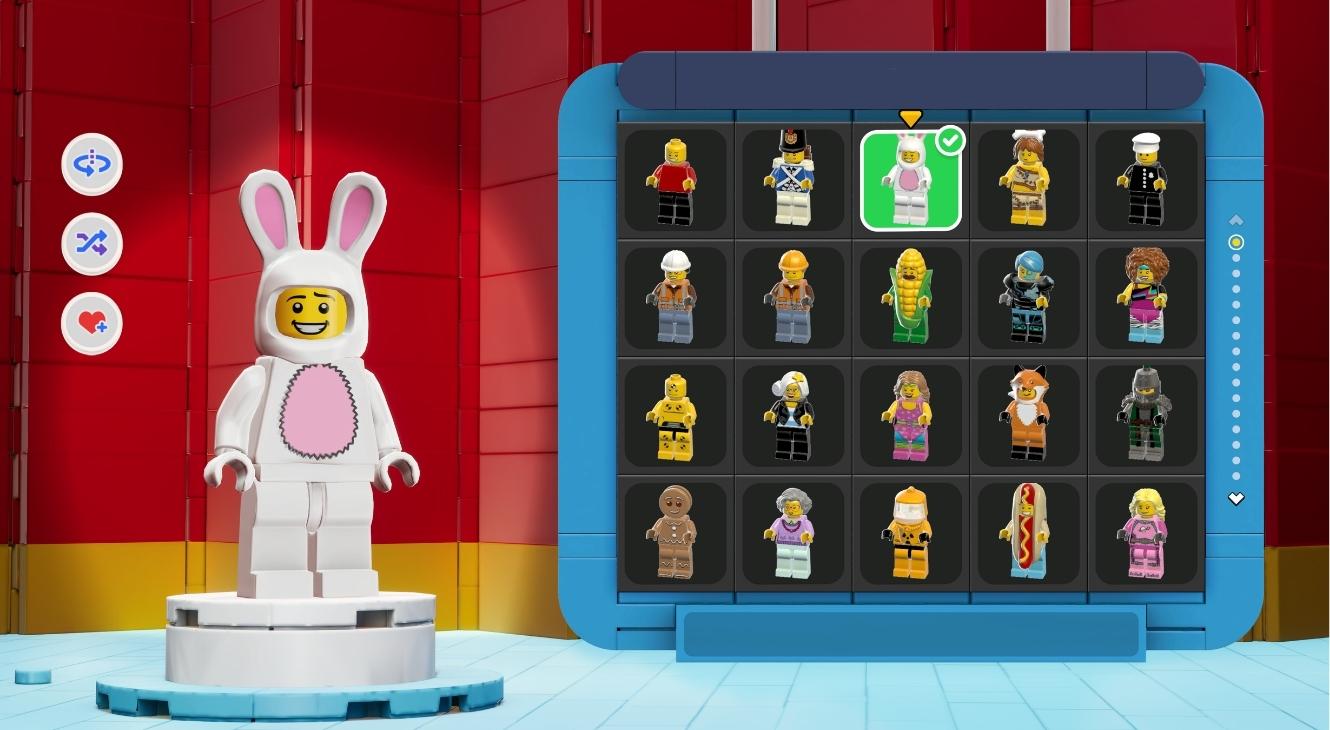
For players who want even lower stakes, they can choose any of the 60 minigames to play at will, including the smaller pool of team games, which pair players together and require them to cooperate to win. These smaller modes also contribute to your player rank, allowing you to make some progress no matter how you enjoy Lego Party.
Lego Party provides plenty of fun attractions and diversions, but a lot of its charm can be found in the pair of commentators, Ted Talker and Paige Turner. The minifigure duo acts as hosts for Lego Party, commenting on minigames, players’ performance and more with surprising depth.
During one Minigame Rush, they remarked that I had won several minigames in a row, and when I finally lost one, they theorized that I may have lost on purpose to spare the other players’ feelings. More than once, the pair managed to elicit a laugh, making them a welcome addition to the game, but if they become too repetitive, there is an option to turn down their audio.
For Lego’s first party game, Lego Party is a strong entry, with lots of unlockable minifigures, the ability to create your own, and fun, distinct boards to play on. The only issue is that there isn’t more; four boards in Challenge Zone may feel repetitive after a few plays on each one, and the sixty minigames may lose their charm when you’ve played them for the fifth or sixth time. For now, though, Lego Party provides plenty of fun, so bring some friends.
Lego Party is available now on PC, Nintendo Switch, PlayStation 4, PlayStation 5, Xbox One and Xbox Series X|S.
Lego Party
-
Rating - 8.5/108.5/10
TL;DR
For Lego’s first party game, Lego Party is a strong entry, with lots of unlockable minifigures, the ability to create your own, and fun, distinct boards to play on.

